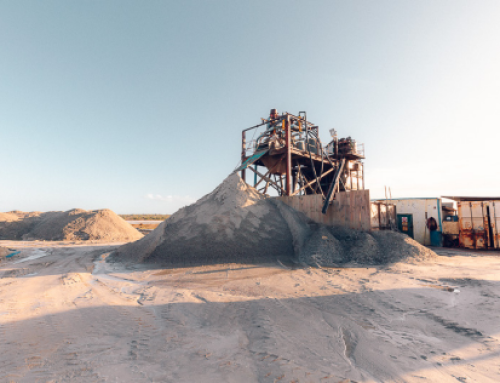Gypsum is a soft white to gray mineral mined worldwide. Composed of calcium sulfate dihydrate, this mineral is used in building trades to produce drywall and plaster and as writing chalk; medical cast materials; sculpture applications are all possible uses of Gypsum.
Fun Facts About Agricultural Gypsum
Gypsum (calcium sulfate dihydrate) is an amazing mineral with many uses. Commonly referred to as plaster of paris, it has long been used in decorating homes and structures as well as creating molds and casts over centuries. Furthermore, gypsum acts as a natural fertilizer, soil stabilizer, and water clarifier – just some of its many applications!
Gypsum Can Reduce Soil Compaction
Gypsum increases the range of soil moisture levels where cultivating can safely take place, which makes cultivating easier with reduced energy usage – an invaluable advantage for organic producers who must break up and turn over their soils regularly.
Gypsum can bind to clay particles, rendering them smaller and easier to separate from one another in the soil. This allows for improved water and air movement in sand/sandy loam soils that tend to become compacted over time, as well as helping reclaim saline soils by replacing sodium-binding sites with calcium binding sites, thus enabling leaching away as sodium sulfate as it leaches from them into solution.
1. It’s a natural fertilizer
Gypsum (calcium sulfate dihydrate) is a natural mineral rock composed of calcium sulfate hydrate that ranges in color from white, grey or tinted brown depending on impurities, depending on where its mined from. Gypsum finds use as plastering filler, food additive and even special effects in movie sets.
Gypsum becomes beneficial to soil when mixed with water and crushed up into a paste or slurry through calcination; it alters its structure as it loses hydration and forms rigid crystal structures.
Gypsum spread on the ground helps loosen compacted structures by breaking apart molecules, which allows plant roots better access nutrients. Furthermore, its use reduces salt levels in soils high in sodium content.
2. It’s a soil conditioner
Gypsum (calcium sulfate dihydrate) is an environmental-friendly water-soluble mineral widely mined around the world for use in construction projects like drywall and plaster installation, soil conditioning and fertilizing, agriculture as well as soil conditioning and fertilizing applications.
Improve the permeability of soil by making it easier for water and nutrients to move through it more freely, helping prevent excess runoff and erosion.
Gypsum applied to the soil surface will promote flocculation of clay particles, helping them form into stable aggregates that allow roots to easily spread across it.
Gypsum offers water retention benefits as well as increasing solute concentration of low-solute irrigation water that cannot permeate into the soil (Traynor 1980). Furthermore, its reduced bulk density makes tilling easier; alfalfa and corn prefer its soil conditions (Shainberg et al. 1989).
3. It’s a soil stabilizer
Gypsum can help stabilize soil by binding organic material and restricting movement of fine particles, thus decreasing physical labor needed to loosen heavy clay soils.
Gypsum not only prevents fine particles from migrating through soils but can also decrease wind and water erosion, helping soils retain moisture better while improving permeability.
Gypsum treatments can reduce acidity of subsoils and enhance plant uptake mechanisms by increasing calcium availability, while increasing precipitation of phosphorus as calcium phosphate to prevent its leaching into waterways.
Aldrich and Schoonover (1951) noted how this could assist in eliminating excess boron from sodic soils, preventing any structural damage in low rise buildings due to excessive amounts of boron. Furthermore, it can enhance expansive clay soil’s swelling potential for better strength thus preventing excessive swelling that might harm structures abutting them.
4. It’s a water stabilizer
Gypsum is a naturally-occurring mineral used in many food products such as canned vegetables and ice cream, but also used in the brewing process to increase beer hardness while decreasing pH, as well as manufacturing paper, glass, ceramics brick and cement products.
Heat alters gypsum so it separates its hydrogen bonds and drives off most of its water, becoming calcined gypsum or plaster with the chemical formula CaSO 4*1/2H 2 O. This forms an easily formable powder which can be added to other materials to form molds or binding them together.
Addition of gypsum can significantly decrease soil compaction across most but not all soil types, creating easier to till soil (Shainberg et al. 1989). Gypsum also lowers penetrometer resistance and improves infiltration rates to protect against excess runoff or erosion; additionally it may decrease turbidity in ponds; however this should only be added after its source has been identified and addressed.
5. It’s a soil amendment
Gypsum is an effective soil amendment that provides essential nutrients, improves soil structure, and can help stop run-off and erosion while simultaneously protecting it from becoming waterlogged.
Gypsum applied to soil responds with its acidic elements to produce calcium ions (Ca2+) and sulfate ions (SO42-), without adding or subtracting hydrogen ions (H+), so gypsum does not serve as either a lime or an acidifier.
Soil modification can also help decrease aluminum toxicity, by replacing aluminum ions on clay lattices with sulfate ions and thus decreasing swelling and cracking, thus allowing air and water to travel easily through the soil.
Gypsum helps loosen compacted soil by binding clay particles together and creating spaces for water and air to move through it. Furthermore, it increases water and nutrient absorption rates due to increasing soil particle surface area thereby improving hydraulic conductivity of soils.



